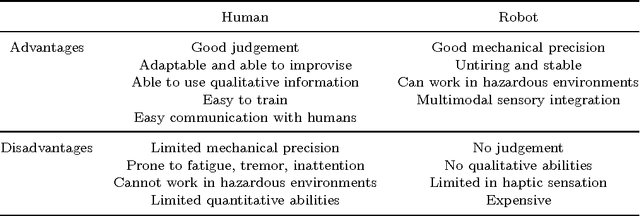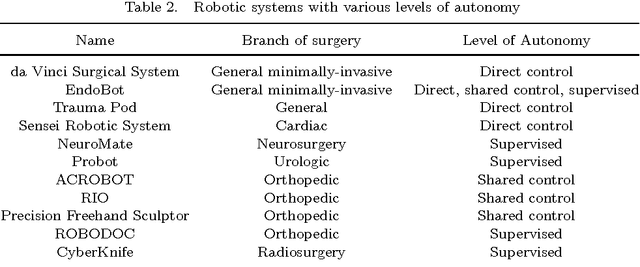Robot Autonomy for Surgery
Paper and Code
Jul 10, 2017



Autonomous surgery involves having surgical tasks performed by a robot operating under its own will, with partial or no human involvement. There are several important advantages of automation in surgery, which include increasing precision of care due to sub-millimeter robot control, real-time utilization of biosignals for interventional care, improvements to surgical efficiency and execution, and computer-aided guidance under various medical imaging and sensing modalities. While these methods may displace some tasks of surgical teams and individual surgeons, they also present new capabilities in interventions that are too difficult or go beyond the skills of a human. In this chapter, we provide an overview of robot autonomy in commercial use and in research, and present some of the challenges faced in developing autonomous surgical robots.
 Add to Chrome
Add to Chrome Add to Firefox
Add to Firefox Add to Edge
Add to Edge